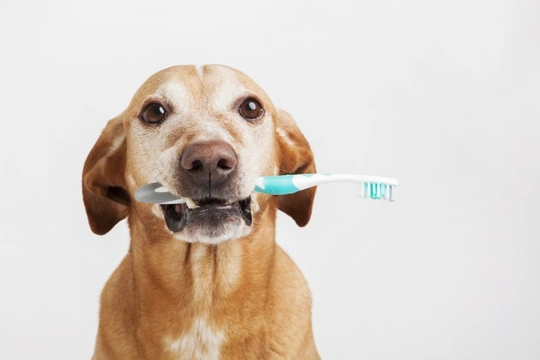
Five mistakes to avoid when brushing your dog’s teeth
Despite the fact that brushing your dog’s teeth a few times a week from the time that they are young can help to keep their teeth in good condition and avoid problems further down the line, it is still the case that very few dogs actually have their teeth brushed regularly – or properly.
Bad, rotting teeth, sore gums and foul breath are no more normal or acceptable for dogs than they are for people, and dental problems in the dog are not something that owners should accept or ignore. However, brushing your dog’s teeth the right way and being conscientious about doing it regularly can help to prevent such problems from arising, reducing the need for invasive and often expensive sedated dental procedures further down the line.
There are lots of different options for dog toothbrushes and pastes on the market, in order to allow you to pick the right tools for your own dog – and your vet will be able to make recommendations and tell and show you how to brush your dog’s teeth efficiently and effectively.
However, even if you started out well and your dog is very tolerant of brushing, there are a range of different mistakes that can creep in along the way, or from the outset – any of which can reduce the impact of your good work.
In this article, we will look at five of the most common mistakes made by dog owners who make the effort to brush their dog’s teeth – and how to avoid them.
Relying on the toothpaste, not the brushing
Most dog owners who clean their dog’s teeth use a specially designed dog toothbrush and a toothpaste that is specifically designed to meet the needs of dogs, as well as being palatable. Human toothpaste is not only inappropriate for dogs, but will also taste bad to them-making the procedure unpleasant and also ineffective.
It is important to get the right type of toothbrush for your dog, and again, not try to use a human brush-and different muzzle shapes and sizes need different types of brush, as the mouth of say, the Japanese Akita and the English bulldog are very different!
However, even if you do use the appropriate dog-friendly toothpaste, the brushing itself, and not the toothpaste, is the key to protecting and thoroughly cleaning your dog’s teeth. You can even brush your dog’s teeth effectively without using a paste at all – and just giving your dog’s teeth a cursory swipe with the brush and expecting the toothpaste to work on its own is ineffective.
Not brushing consistently
For cleaning your dog’s teeth to have a positive impact on their dental health and help to avoid problems later on, you have to be consistent – simply brushing your dog’s teeth now and then when it occurs to you is not enough.
You should brush your dog’s teeth at least three or four times a week, and ideally, once a day – so try to work it into your regular routine, which will not only provide the best level of protection for your dog’s dentition, but also help them to become used to the procedure and more accepting of it, so that each time you brush it should only take a couple of minutes and not be a major hassle.
Failing to praise and reward
Even if your dog is very good about letting you brush their teeth, you are still asking them to sit through something that feels strange (and potentially, ticklish) to them, and that is outside of their frame of reference.
You should be encouraging and positive with your dog throughout the procedure whilst remaining workmanlike and efficient, and when you are finished, praise your dog strongly and give them a reward, such as a favourite toy or a dental chew (or something else that is good for their teeth).
Beginning dental care after problems have arisen
If your dog’s breath smells foul, their gums are turning black or you can see problems such as visible plaque, decay or damage to the teeth, starting to brush their teeth will not correct these problems.
If your dog’s mouth is not in good condition to start with, brushing at home will not resolve any of the issues – and may well simply be unpleasant or even painful for your dog.
Your dog will need to undergo a sedated veterinary dental procedure in order to address existing problems or teeth and gums that are already in poor condition, before brushing at home will be worthwhile. Don’t think that starting to brush your dog’s teeth after the damage has been done alone will be effective.
Ignoring problems
Finally, brushing your dog’s teeth gives you an excellent opportunity to get to know their teeth and gums, identify what is normal for them, and spot the onset of any problems promptly. However, this is only of value if you act on it when you spot a potential problem in the making, and take your dog to the vet promptly.
Even dogs whose teeth are cleaned regularly and effectively may potentially suffer from dental problems, not all of which can be prevented by brushing, or dealt with at home.
However, prompt intervention and correction if a problem does arise and you spot it as a result of brushing will ensure that your dog needs only a minimal level of treatment, to support their regular brushing and keep their teeth healthy for life.



